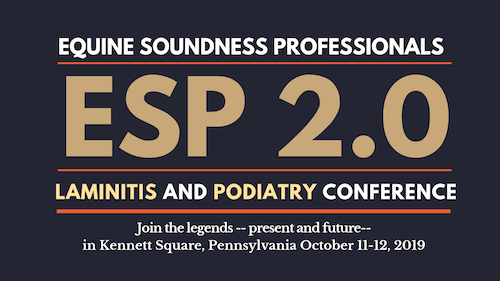You're invited! Laminitis researcher and author Professor Chris Pollitt of Australia will lead a roster of seven well-known farrier and veterinarian speakers to address practical and research developments to treat and prevent laminitis and advance the success of podiatry in the treatment of hoof disease. The two-day conference, organized by Equine Soundness Professionals (ESP), will be held October 11-12, 2019 in Kennett Square, Pennsylvania.
This conference is limited to 60 attendees and is designed for ESP members and other professional farriers and veterinarians. For further information about this event, remaining sponsorship opportunities or media inquiries, contact Dave Gilliam at (214) 907-3380 or email dave@equisporthoofcare.com. The conference website is www.laminitispodiatryconference.com.






